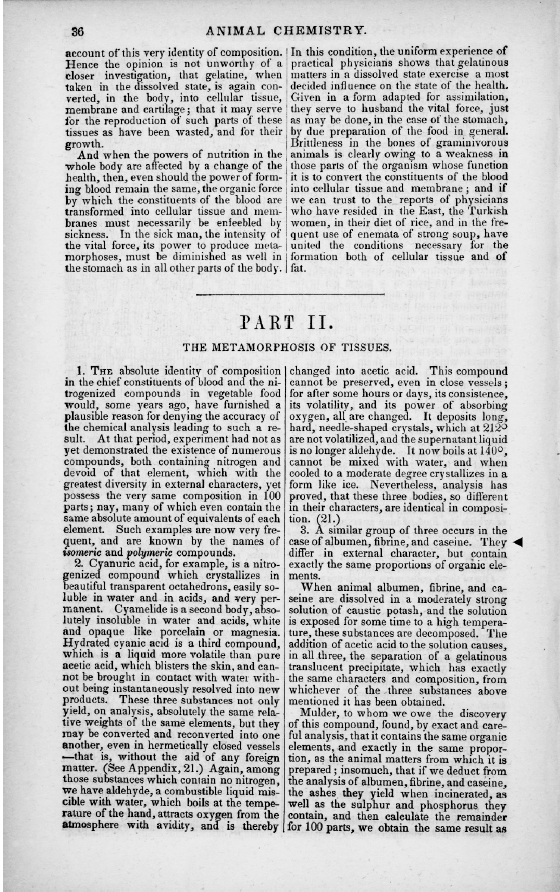
The study of bioinformatics includes the analysis of proteins. In the first half of the nineteenth century the Dutch researcher Gerardus Johannes Mulder (1802–1880), advised by the Swedish chemist Jons Jacob Berzelius (1779–1848), studied the “albuminous” substances or proteins fibrin, albumin from blood, albumin from egg (ovalbumin), and the coloring matter of blood (hemoglobin). Mulder and others extracted and purified these proteins and believed that they all shared the same elemental composition (C400H260N100O120), with varying amounts of phosphorus and sulfur. Justus Liebig (1803–1873) believed that the composition of protein was C48H36N6O14. This page, from Liebig's Animal Chemistry, or Organic Chemistry in its Applications to Physiology and Pathology (1847, p. 36), discusses albumin, fibrin, and casein (see arrowhead).
1
![]()
Introduction
Bioinformatics represents a new field at the interface of the twentieth-century revolutions in molecular biology and computers. A focus of this new discipline is the use of computer databases and computer algorithms to analyze proteins, genes, and the complete collections of deoxyribonucleic acid (DNA) that comprises an organism (the genome). A major challenge in biology is to make sense of the enormous quantities of sequence data and structural ...
Get Bioinformatics and Functional Genomics, Second Edition now with the O’Reilly learning platform.
O’Reilly members experience books, live events, courses curated by job role, and more from O’Reilly and nearly 200 top publishers.

